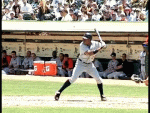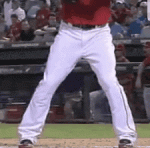OK, we're 29 posts in and we haven't seen an MLB player actually start to rotate his hips. I'm assuming the topic is the coil out, not the coil in.
Here's Granderson from toe touch to heel drop. This is when the hips begin to open with force.

This clip could be a eureka moment.
Here's Justin James

Here's Granderson from toe touch to heel drop. This is when the hips begin to open with force.

This clip could be a eureka moment.
Here's Justin James

Last edited:




